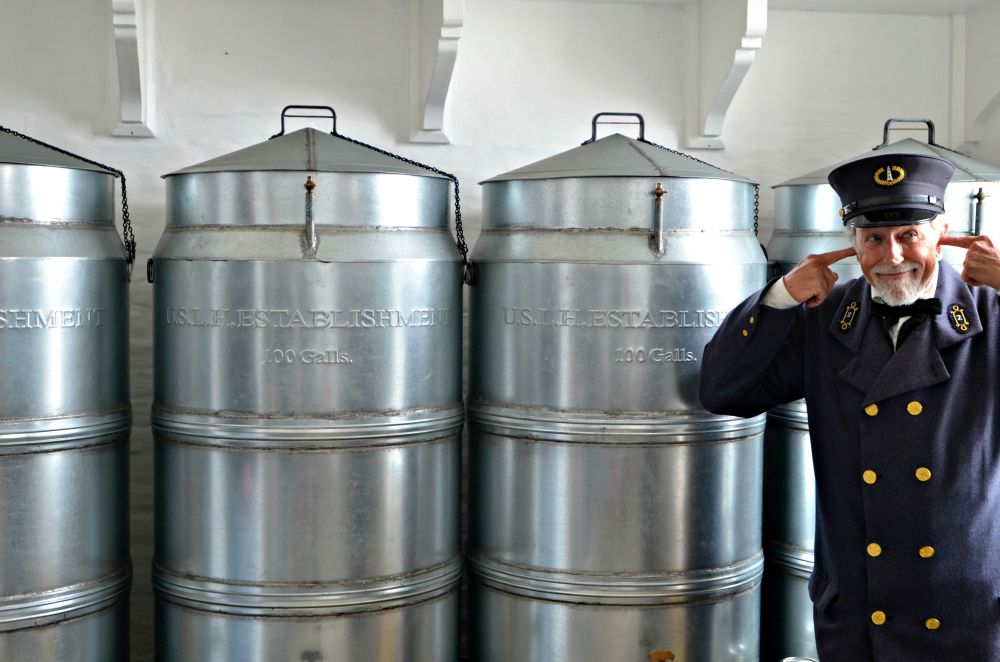Yaquina Head Outstanding Natural Area in Newport, Oregon, has that name for a reason.
Views of migrating whales. World class tide pools. A rock beach that makes music when the waves wash over it. A historic lighthouse that was built in 1872.
What more could you ask for a weekend visit?
Well, you could ask for no fog. You could ask for the tides to cooperate in the window you have to visit. You could ask for lots of things, I suppose. We didn’t get many of those wishes, but we still had a blast.
The area was socked in by fog the entire time we were there. The tide was out just far enough that there were no musical interludes on the rocks, but close enough that the tide pools were covered up.

The whales were reportedly playing on a grand stage in front of visitors, but disappeared when we showed up.
I digress.
We found this magical part of the Oregon Coast when we recently visited Newport for a wedding.
On a summer-like day for the rest of the Pacific Northwest, we popped out of the coastal mountains of Oregon to discover 58-degree weather with the coast shrouded in fog.
Not to be deterred, we immediately headed to the Natural Area to see the lighthouse and whatever else we could find.
After signing up for the tour, we hiked the half mile to the Head – the so-called basalt outcropping jutting into the ocean – and found no lighthouse … just more fog.
The visibility was certainly under a quarter mile, but we didn’t let that stop us. Like good Northwesterners (Veronica applied for membership last summer), we hiked down the stairs to Cobble Beach.

We didn’t hear any musical interludes, but we did enjoy the strange rocks that make up the beach. They are round like baseballs and dark black, the result of the Columbia River basalt flows from 14 million years ago. The tide pools were also nowhere to be found, though we saw a lot of colorful sea anemones.
There were also plenty of sea lions – which Veronica claimed were there to visit her – and plenty of coastal birds perched on the many sea stacks in the area.
After growing bored of the beach, we climbed back up the stairs to go on our tour of the lighthouse.
Despite all the bad weather, this was easily the crown jewel of the visit.
The volunteer tour guide was dressed in period costume and stayed in character throughout the 45-minute presentation, which included explanations about how the lighthouse was built, how the workers lived, survived and had fun. It had the original oil drums, showing how the light was lit 24-7.


It also had an iron spiral staircase climbing 94 feet to the top of the tallest lighthouse in Oregon.
If you know me, you know I can get a bit of the vertigo and have anxiety attacks – for example, I struggle to walk through tunnels (which ruined one hike we went on) – but I forced myself to push on and climb the 194 stairs up the ever shrinking tower.

One lady in the group had to stop at the second landing because of her fear of heights.
Anyway, up we went, eventually standing at the base of the light – which isn’t all that big. In fact, lighthouses have smaller lights and then gigantic mirrors which cause the light to be reflected far out to sea.
After a brief talk, we went one by one up the last five stairs to get a view of the light and a bit of a foggy view through the windows up top.
Upon our descent, Veronica and I decided that if the weather was better Sunday morning on our way out of town we would head back to the park and hope to see some of the sights we had missed.
We awoke Sunday morning to a beautiful sunny sky with panoramic views of the lighthouse from our room at the Hallmark Resort on the beach. After breakfast we hurried back to the park, and at the entrance gate we were told that there had been lots of whale activity seen from the lighthouse observation deck.

As we were driving to the parking lot the damndest thing happened: Fog started rolling in. We couldn’t believe it.
We were cursed!
By the time we made our way to the parking lot, you couldn’t see 30 feet. We were met by a group of people heading back to their cars talking about how cool the whales were.
I choose to believe they were lying.
Anyway, if you ever get a chance to visit Yaquina Head Outstanding Natural Area do it. Whether it is foggy or not.
– Craig Craker
We were just visiting the Oregon Coast this past weekend! We stopped at the Yaquina Head Lighthouse on Friday and it was SO foggy you could barely see it! And we did a hike in Ecola State Park up by Cannon Beach to see the lighthouse off the coast there, and when we reached the viewpoint you couldn’t see more than a few feet out. So I feel your pain! 🙂
LikeLike
It wouldn’t be a visit to a Northwest beach without some inclement weather, I guess. We really wanted to go to Cannon Beach as well, but ran out of time. Thanks for reading!
LikeLike